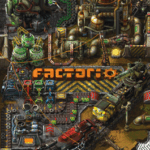Car Dealer Simulator is a game that puts players in the shoes of an automotive entrepreneur, challenging them to build a car dealership empire from the ground up. With an emphasis on real-world business mechanics such as buying, repairing, pricing, marketing, and negotiation, the game offers a fresh and immersive take on the tycoon-simulation genre.
Rather than racing or tuning cars like many automotive titles, Car Dealer Simulator focuses on the business side—sourcing used vehicles, fixing them up, negotiating with customers, and expanding operations. The result is a gameplay experience that is both educational and strategic.
This article explores the depth, systems, evolution, and appeal of Car Dealer Simulator while evaluating its strengths and areas for improvement.
1. Introduction to the Game Concept
Car Dealer Simulator is designed to replicate the day-to-day responsibilities of running a car dealership. Players begin as small-time dealers with limited funds and a single garage slot, tasked with buying used vehicles, refurbishing them, and reselling them at a profit.
Over time, players can expand their lot, hire staff, improve facilities, and establish a recognizable brand. The game incorporates realistic pricing trends, mechanical diagnostics, and customer behavior patterns, making success feel earned rather than automatic.
This grounded simulation delivers a rewarding balance between economics and automotive knowledge.
2. The Buying and Inspection Process
Buying vehicles is central to the gameplay loop. Players visit car auctions, browse online marketplaces, or inspect walk-in vehicles offered by individual sellers. Each vehicle varies in condition, mileage, brand reputation, and hidden issues.
Players must inspect each car manually or pay for a professional diagnostic report. Missing a serious flaw—like engine failure or rust damage—can lead to expensive repairs and financial losses.
The game simulates risk and reward well, teaching players how to evaluate value, trust their instincts, and make informed purchasing decisions.
3. Repairs and Refurbishment
After purchase, many cars require mechanical or cosmetic work before resale. Players can perform tasks such as:
-
Replacing worn-out tires or brake pads
-
Painting and bodywork repairs
-
Interior detailing and cleaning
-
Engine diagnostics and part replacements
The in-game repair system offers detailed workbench interactions, realistic labor costs, and time-based operations. Players may choose to invest heavily to maximize resale value or flip a car quickly for smaller profit margins.
These decisions add depth and strategy to each transaction.
4. Pricing Strategy and Market Dynamics
Pricing in Car Dealer Simulator isn’t static. The game features a dynamic economy where vehicle demand shifts based on brand popularity, seasonal trends, and customer preferences. Luxury cars may sell slower but offer larger profit margins, while cheap compacts move faster.
Players must consider repair costs, listing fees, and local competition when setting prices. Overpricing risks scaring off buyers, while underpricing may lead to quick but unprofitable sales.
Marketing options such as online ads or local promotions help reach specific buyer demographics and improve visibility.
5. Negotiation and Customer Behavior
Customer interaction is a core component of the simulation. Each buyer has a unique budget, preferences, and negotiation style. Some may haggle aggressively, others might walk away if pressured.
Players must read cues and choose dialogue options wisely. Offering discounts, bundling repairs, or providing warranties can close tough deals. Conversely, poor negotiation can cost thousands in potential revenue.
This system adds human unpredictability and depth to the otherwise economic-driven gameplay.
6. Business Expansion and Staff Management
As profits grow, players can expand their dealership by purchasing larger lots, opening new locations, or upgrading facilities. Expansion opens opportunities to:
-
Hire staff such as mechanics, detailers, and salespeople
-
Automate inspections or routine tasks
-
Increase the number of cars handled at once
-
Offer financing or trade-in programs
Managing employee efficiency, salaries, and satisfaction adds another layer of realism. A well-managed team significantly boosts productivity and customer service quality.
7. Career Progression and Reputation System
Car Dealer Simulator features a reputation system that reflects how fairly and ethically players operate. Honest dealings, excellent customer service, and clean business practices increase reputation, leading to better client trust and premium pricing.
However, players can also choose a shadier route: hiding flaws in vehicles, using counterfeit parts, or lying about mileage. While profitable short-term, these tactics can result in penalties, negative reviews, or even legal consequences.
This moral flexibility allows for varied playstyles and outcomes.
8. Graphics, User Interface, and Realism
Visually, Car Dealer Simulator offers a semi-realistic aesthetic. The models of cars, garages, and dealerships are detailed enough to be immersive but aren’t hyper-realistic. The user interface is clean, with clear dashboards for inventory, finances, and marketing.
The game uses real-world-inspired brands (though typically fictionalized) and mimics actual vehicle behavior, repair logic, and customer psychology.
This attention to realism creates a satisfying experience for fans of both cars and business simulations.

































